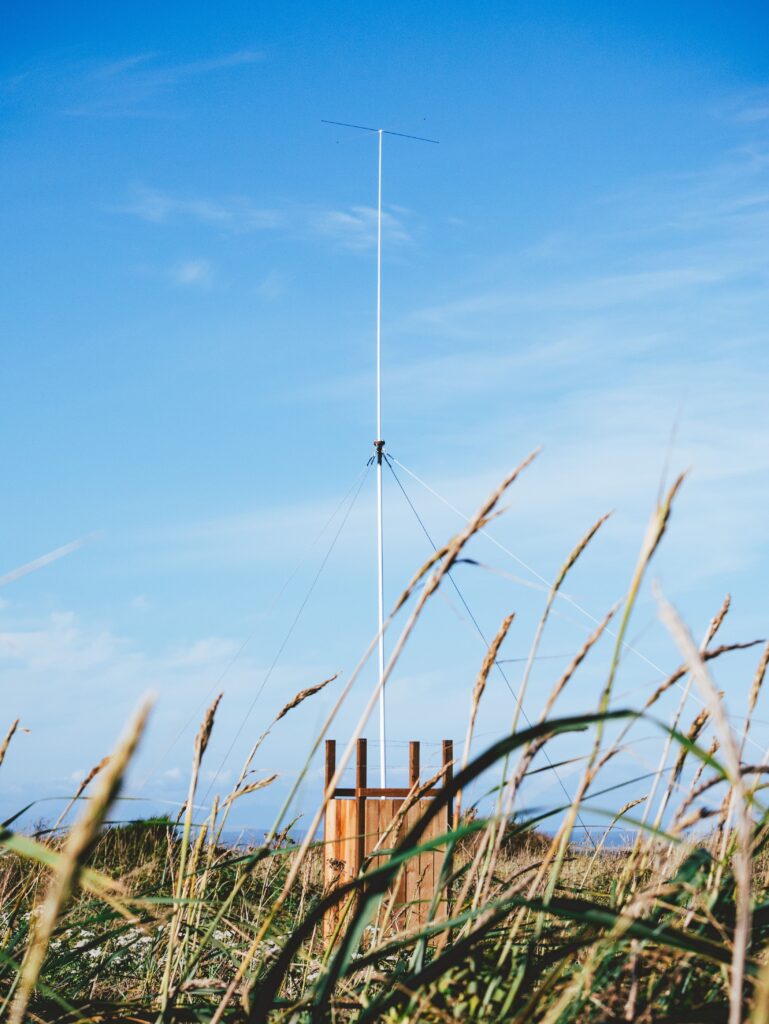
Single-sideband modulation (SSB) is a modulation technique frequently used in ham radio communication. SSB is a form of Amplitude Modulation (AM) where one of the sidebands is completely suppressed.
In SSB only one sideband carries the information. In a standard AM signal, the carrier wave is accompanied by two sidebands. The upper sideband (USB) and the lower sideband (LSB). Both sidebands contain identical information, resulting in redundancy and wasting bandwidth. SSB modulation eliminates one of these sidebands, which makes it more efficient in terms of bandwidth usage.
In ham radio, the bandwidth of a single-sideband (SSB) signal is typically around 2.4 kHz. This is the minimum bandwidth required for intelligible voice communication. Single-Sideband is more bandwidth-efficient compared to traditional amplitude modulation (AM).
There are two types of SSB modulation, Upper Sideband (USB) and Lower Sideband (LSB). In USB modulation, the lower sideband is completely suppressed, and only the upper sideband is transmitted. Generally speaking frequencies above 10MHz will use USB, and frequencies below 10MHz will use LSB. In LSB modulation, the upper sideband is suppressed, and only the lower sideband is transmitted.

However there are some exceptions to when USB and LSB are used.
Digital modes like PSK31, RTTY, and FT8 will use USB, even below 10MHz.
Digital modes like JT65, and WSPR may be found using LSB.
So, keep in mind, the choice of USB or LSB depends on the specific digital mode,
and the band plan.
SSB Modulation Advantages
Bandwidth Efficiency
- One of the biggest advantages is Bandwidth Efficiency. SSB signals occupy only half the bandwidth of a full AM signal, which is especially important in crowded radio frequency bands.
Reduced Interference
- By eliminating one sideband, SSB reduces the potential for interference between neighboring signals on the same frequency.
Improved Signal-to-Noise Ratio
- SSB signals can offer better signal quality because all the transmitted power is concentrated in a single sideband, leading to a higher signal-to-noise ratio.
Longer Range
- The reduced bandwidth allows SSB signals to propagate over longer distances and work better under challenging propagation conditions.
SSB Modulation Drawbacks
Requires More Complex Receivers
- SSB signals require specialized receivers capable of reconstituting the missing carrier frequency and demodulating the single sideband, which can be more complex and expensive than standard AM receivers. To demodulate an SSB signal, the receiver needs to recreate the carrier signal, which is not present in the transmitted signal. This typically involves using a local oscillator in the receiver to generate a new carrier signal at the same frequency as the original carrier. This process, called carrier regeneration, adds complexity to the receiver design.
More Sensitive to Frequency Drift
- SSB signals can be sensitive to slight frequency drift, which can affect the quality of demodulation. Ever wonder why you can’t seem to get that audio crystal clear? Well, tuning is more critical with regard to SSB than in AM receivers, which can receive both sidebands simultaneously. Incorrect tuning can result in distorted or unintelligible audio.
In summary, single-sideband modulation is a technique used to reduce the bandwidth and improve the efficiency of amplitude modulation, making it suitable for long-distance radio communications, especially in situations where bandwidth may be limited or interference is a concern.
